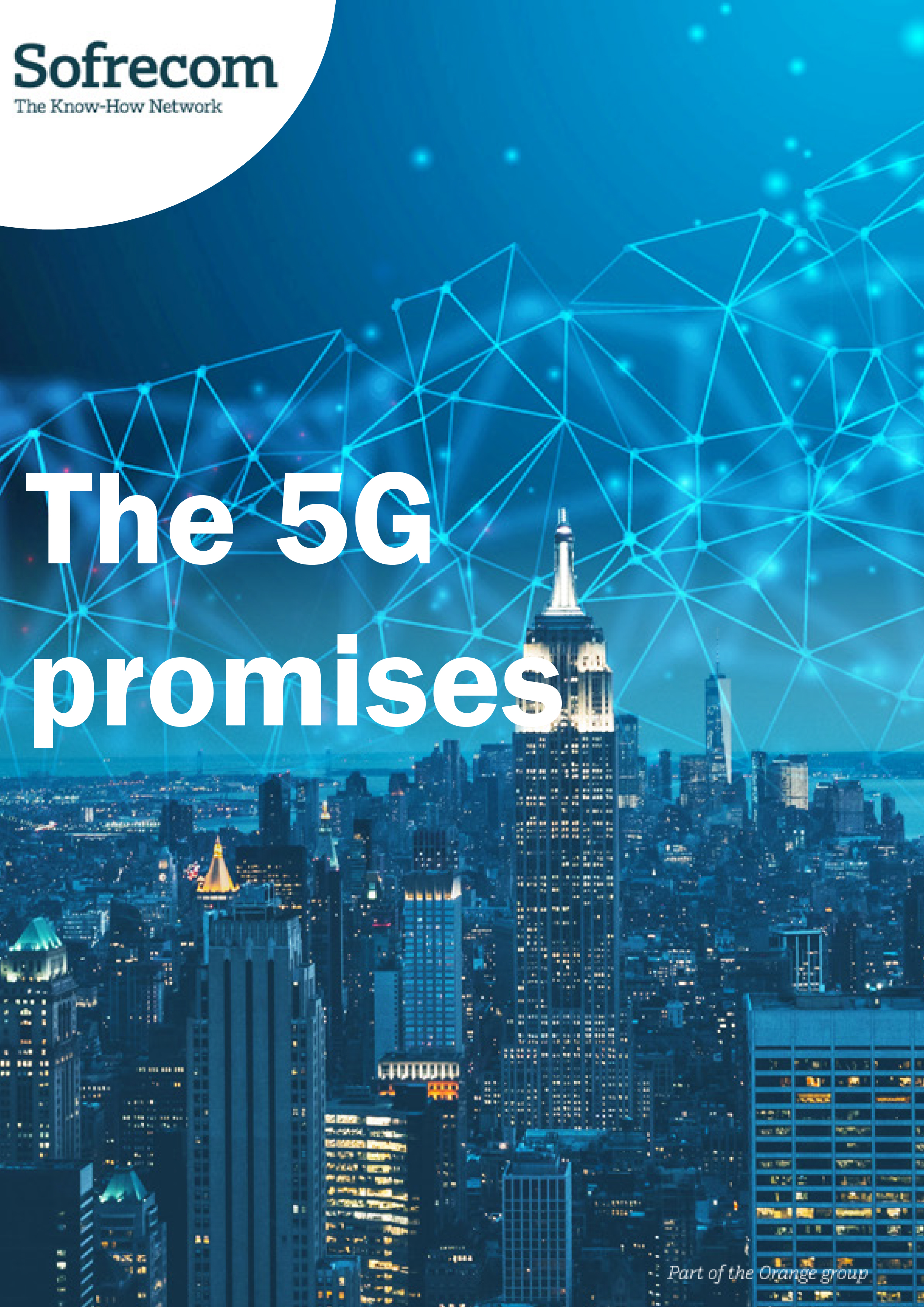
The 5G should benefit many new uses (connected objects, connected cars, . . . ) but some observers question its monetization model. Indeed, the introduction of 5G is looking as promising as the previous one. How then can a premium price be imposed when all competitors are deploying simultaneously, thereby sterilising any competitive advantage?
While 5G is expected to benefit numerous B2B usages (IoT, connected cars, etc.), many observers challenge the room for monetization, as the introduction of 5G bears many similarities to the previous generation (4G). It appears very difficult for mobile operators to sustain a price premium in an environment where all operators deploy at the same time and none is able to hold a competitive advantage.
A delicate business case for Fixed Wireless Access
The new paradigm comes with the possibility to replace fixed infrastructure, both for Wide Area Networks (WAN) and Local Area Networks (LAN).
On the WAN end, the opportunity for Fixed Wireless Access (FWA) is coming under scrutiny. This will be a key technology for digital inclusion, increasing both the number of connected customers and the available data rate. However, this will not necessarily introduce new usages in itself. FWA and Fiber may be offered through identical packages, targeting primarily B2C and Small Businesses.
This will translate into new revenue streams, through the extension of the broadband customer base, and opportunities for mobile players to enter the fixed telecommunications business. The business case will depend on a variety of characteristics. The band used will determine how close the antenna will need to be installed to reach the customers. For 26 Ghz, line of sight might be required which imposes tight constraints, as opposed to lower bands such 3,5Ghz which have better building penetration capabilities. Secondly, bringing antennas close to customers requires fiber deployment to backhaul the traffic. This means deploying fixed infrastructure already close to the customer. In this case, there might be
competition between wireless and wireline to build the last mile. The last point to take into account is the impact within customer premises. Wireless solutions may require site surveying and installation of outdoor wireless equipment; to be balanced against the layout of fiber that can require civil works. The FWA opportunity thus results from a very delicate economical fine tuning.
With private mobile networks, operators may combine integration with traditional service provision
Campus coverage solutions (including Private Mobile Networks) will at first compete against established wifi solutions, defined as Wireless LAN. However, 5G opens up new possibilities, for example, guaranteeing SLA on some critical processes for Industry 4.0 or operating in large areas. These solutions will target large customers including port authorities, airports, owners of industrial assets such as plants, mines, refineries.
The approach and the value proposition are not based on connectivity, but on Cost of Ownership or improvement of business processes. The business models depend on the level of dedication of the infrastructure. In some countries, private companies will be able to build a fully private mobile network from scratch. If the operator integrates such a solution it will be an integrator model, where the capex is fully supported by the customer. However, this type of services can also be delivered through mixed solutions, where the operator will allocate
some shared resources to the customer such as spectrum or core network elements. The result will be a mixed business model between fully shared resources and fully dedicated resources, and the difference in Customer Cost of Ownership between
solutions can be 5 times as much, depending on the chosen technical design.
The B2B2X business model in IOT
The other opportunity lies in an intensification of the Internet of Things (IOT).
5G will ease de development of critical IOT requirements thanks to Low Latency capabilities.
Health / Telemedicine and autonomous vehicles are the most advertised uses cases especially when coupled with very high broadband. For some of these offers, new ways of selling might be implemented. For example, a car user will most likely not buy the embedded infotainment systems directly from a network operator. Hospital patients will not be the direct customer of the network operator either.
These business models are called B2B2X: monetization of the solution is indirect. The operator sells B2B services to a company, for the benefit of its regular end customers (B2X).
For example, an operator may sell augmented reality services capabilities to a company that will in turn provide them to its clients in a specific context (for example when the consumer enters a shop, a stadium, etc.) or in a situation determined through a more complex combination of analytical information (customer profile, localization, customer action).
In massive IOT, there might even be schemes where the value of the data collected is higher than the one of the mobile subscription. In that case, the operator derives its revenues from the data and proposes subscriptions for free. This can be deployed in Smart City environments with the deployment of sensors supporting diverse use cases: metering, smart lightning, traffic management, waste management …
IOT in this B2B2X market is a real opportunity for operator to get even with OTT, as far as data monetization is concerned. However, making sense of IOT data requires looking beyond the object itself (camera, smart lamp, temperature sensor …) to the business process. The key to the value is therefore to combine customer data with object data in the context of a given business process. In some cases, for example with autonomous vehicles, these processes will only involve objects (cars, roads, etc.).
Each business process is intricately linked to the company (for instance a utility, a factory) or to the public authority (a city) that uses it. In essence, the prerequisite to understanding IOT data is for operators to build a close B2B relationship with this “business owner”.
Monetization of these opportunities is not only a matter of mastering the technology but also of transforming the mindset. Succeeding and achieving profitability will require a transformation of operators’ go-to-market, as well as of their margin scheme, where skills will matter more than Capex. This is the typical business model of an ICT service player.
The transformation is already underway and many operators have developed more and more capabilities to integrate additional ICT services beyond connectivity: these “service” revenues already represent up to 30% of the B2B revenues of many Telcos.






